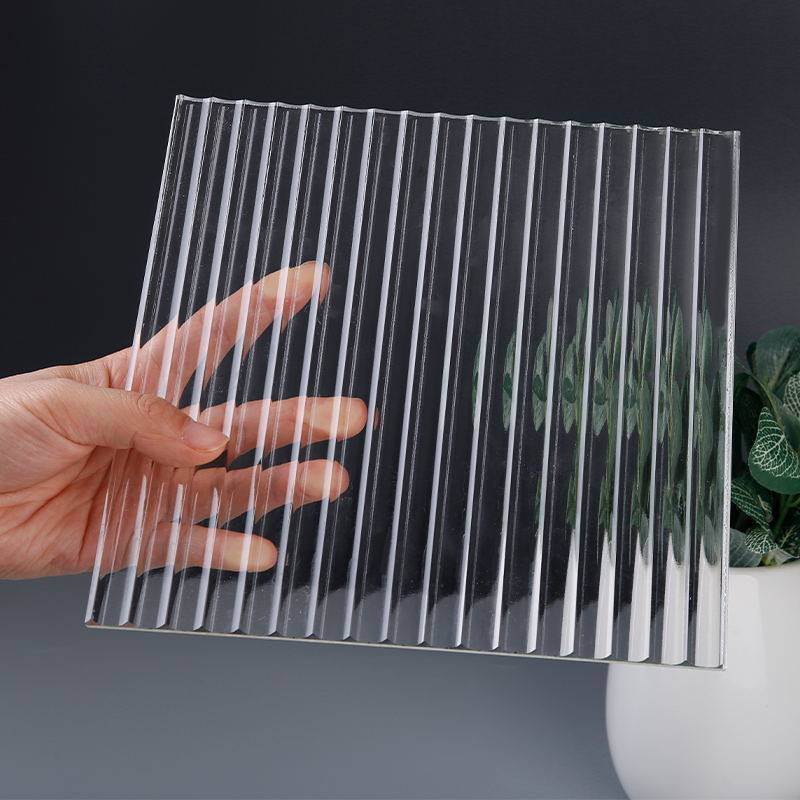The Process of Tempered Glass An Overview
Tempered glass, also known as toughened glass, has become a vital material in modern construction, automotive, and various other industries due to its strength and safety features. The process of manufacturing tempered glass is intricate, involving various carefully controlled steps to ensure the final product is durable and resistant to breaking. In this article, we will explore the entire process of tempered glass production, emphasizing its importance and applications.
What is Tempered Glass?
Tempered glass is produced through a thermal treatment process that significantly enhances its strength compared to standard glass. The process involves heating the glass to temperatures often exceeding 600 degrees Celsius (approximately 1100 degrees Fahrenheit) and then rapidly cooling it. This treatment alters the internal structure of the glass, making it up to five times stronger than untempered glass of the same thickness.
The Manufacturing Process
1. Cutting and Preparing the Glass
The manufacturing of tempered glass begins with cutting standard glass sheets to the desired sizes and shapes. This glass is typically annealed glass, which has undergone a slow cooling process during its initial formation to relieve internal stresses. The cut pieces are then thoroughly cleaned to remove any dirt, dust, or contaminants that might affect the tempering process.
2. Edge Treatment
Once the glass is cut, the edges are treated to remove sharp edges and prevent chipping. The edge treatment process includes grinding or polishing to create a smooth profile. This is particularly important because jagged edges can weaken the glass and make it more susceptible to breakage under stress. Proper edge finishing is a crucial step in enhancing the overall strength of the finished tempered product.
3. Heating
After the glass is prepared, it is placed in an oven or furnace that can reach high temperatures. The heating process is carefully controlled to ensure the glass is evenly heated, avoiding any risk of thermal shock, which could lead to breakage. The glass maintains a temperature around 620 degrees Celsius (1150 degrees Fahrenheit) for a specified duration, depending on its thickness and the required strength.
process of tempered glass
4. Cooling
The rapid cooling process, also known as quenching, is what fundamentally differentiates tempered glass from standard glass. Once the glass has reached the desired temperature, it is subjected to a blast of cold air. This sudden temperature drop induces compressive stresses on the surface of the glass and tensile stresses within the core. As a result, the outer surface becomes much tougher and more resilient.
5. Quality Control
Once tempered, the glass must undergo rigorous quality control tests to ensure it meets safety and strength standards. This may involve stress testing, inspection for surface defects, and verifying the thermal properties of the glass. Quality control is critical in maintaining the integrity of the product, especially for applications that require high levels of safety, such as in buildings and vehicles.
Applications of Tempered Glass
The strength and safety properties of tempered glass have led to its widespread use in various applications
- Architecture Tempered glass is commonly used in facades, windows, and interior applications like glass doors and railings due to its excellent thermal performance and resistance to breakage.
- Automotive In vehicles, tempered glass is used for side and rear windows as it shatters into small, smooth pieces, reducing the risk of injury in the event of an accident.
- Furniture Many modern furniture designs incorporate tempered glass for tabletops and shelves, combining aesthetics with durability.
- Shower Enclosures Glass used in shower doors and enclosures is often tempered to withstand temperature changes and impacts.
Conclusion
The process of manufacturing tempered glass is a sophisticated technique that enhances the strength, safety, and aesthetics of glass products. Through cutting, edge treatment, heating, rapid cooling, and strict quality control, tempered glass becomes a versatile material that meets the demands of various industries. As technology and design evolve, tempered glass continues to play a crucial role in shaping our built environment and everyday products, proving its importance in contemporary life.
 Afrikaans
Afrikaans  Albanian
Albanian  Amharic
Amharic  Arabic
Arabic  Armenian
Armenian  Azerbaijani
Azerbaijani  Basque
Basque  Belarusian
Belarusian  Bengali
Bengali  Bosnian
Bosnian  Bulgarian
Bulgarian  Catalan
Catalan  Cebuano
Cebuano  Corsican
Corsican  Croatian
Croatian  Czech
Czech  Danish
Danish  Dutch
Dutch  English
English  Esperanto
Esperanto  Estonian
Estonian  Finnish
Finnish  French
French  Frisian
Frisian  Galician
Galician  Georgian
Georgian  German
German  Greek
Greek  Gujarati
Gujarati  Haitian Creole
Haitian Creole  hausa
hausa  hawaiian
hawaiian  Hebrew
Hebrew  Hindi
Hindi  Miao
Miao  Hungarian
Hungarian  Icelandic
Icelandic  igbo
igbo  Indonesian
Indonesian  irish
irish  Italian
Italian  Japanese
Japanese  Javanese
Javanese  Kannada
Kannada  kazakh
kazakh  Khmer
Khmer  Rwandese
Rwandese  Korean
Korean  Kurdish
Kurdish  Kyrgyz
Kyrgyz  Lao
Lao  Latin
Latin  Latvian
Latvian  Lithuanian
Lithuanian  Luxembourgish
Luxembourgish  Macedonian
Macedonian  Malgashi
Malgashi  Malay
Malay  Malayalam
Malayalam  Maltese
Maltese  Maori
Maori  Marathi
Marathi  Mongolian
Mongolian  Myanmar
Myanmar  Nepali
Nepali  Norwegian
Norwegian  Norwegian
Norwegian  Occitan
Occitan  Pashto
Pashto  Persian
Persian  Polish
Polish  Portuguese
Portuguese  Punjabi
Punjabi  Romanian
Romanian  Russian
Russian  Samoan
Samoan  Scottish Gaelic
Scottish Gaelic  Serbian
Serbian  Sesotho
Sesotho  Shona
Shona  Sindhi
Sindhi  Sinhala
Sinhala  Slovak
Slovak  Slovenian
Slovenian  Somali
Somali  Spanish
Spanish  Sundanese
Sundanese  Swahili
Swahili  Swedish
Swedish  Tagalog
Tagalog  Tajik
Tajik  Tamil
Tamil  Tatar
Tatar  Telugu
Telugu  Thai
Thai  Turkish
Turkish  Turkmen
Turkmen  Ukrainian
Ukrainian  Urdu
Urdu  Uighur
Uighur  Uzbek
Uzbek  Vietnamese
Vietnamese  Welsh
Welsh  Bantu
Bantu  Yiddish
Yiddish  Yoruba
Yoruba  Zulu
Zulu 

